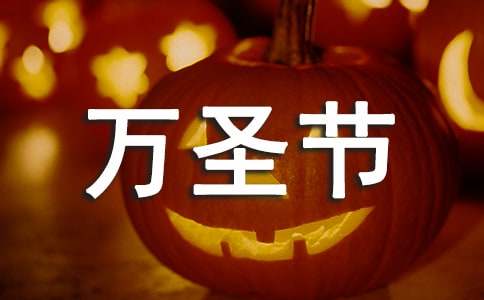- 相关推荐
万圣节英文介绍简单
相信大家对万圣节不会很陌生,在万圣节来临之前,小编跟大家分享一些关于万圣节的简单介绍,一起来看看吧!

【The History Halloween】
Halloween is on October 31st, the last day of the Celtic calendar. It was originally a pagan holiday, honoring the dead. Halloween was referred to as All Hallows Eve and dates back to over 2000 years ago。
All Hallows Eve is the evening before All Saints Day, which was created by Christians to convert pagans, and is celebrated on November 1st. The Catholic church honored saints on this designated day。
【The Origin of Halloween】
While there are many versions of the origins and old customs of Halloween, some remain consistent by all accounts. Different cultures view Halloween somewhat differently but traditional Halloween practices remain the same。
Halloween culture can be traced back to the Druids, a Celtic culture in Ireland, Britain and Northern Europe. Roots lay in the feast of Samhain, which was annually on October 31st to honor the dead。
Samhain signifies "summers end" or November. Samhain was a harvest festival with huge sacred bonfires, marking the end of the Celtic year and beginning of a new one. Many of the practices involved in this celebration were fed on superstition。
The Celts believed the souls of the dead roamed the streets and villages at night. Since not all spirits were thought to be friendly, gifts and treats were left out to pacify the evil and ensure next years crops would be plentiful. This custom evolved into trick-or-treating。
【Halloween costumes】
Children in costumes race from house to house asking for treats. A carved pumpkin, called a jack-o’-lantern, grins from a porch as the children pass. According to legend, jack-o’-lanterns protect people in their homes from ghostly spirits.
It’s all part of the fun on Halloween! The roots of Halloween stretch back thousands of years and borrow customs from several parts of the world.
WHAT IS HALLOWEEN?
Halloween is a holiday celebrated on October 31. By tradition, Halloween begins after sunset. Long ago, people believed that witches gathered together and ghosts roamed the world on Halloween. Today, most people no longer believe in ghosts and witches. But these supernatural beings are still a part of Halloween.
The colors black and orange are also a part of Halloween. Black is a symbol for night and orange is the color of pumpkins. A jack-o’-lantern is a hollowed-out pumpkin with a face carved on one side. Candles are usually placed inside, giving the face a spooky glow.
DRESSING IN COSTUMES
Dressing in masks and costumes is a popular Halloween activity. Costumes can be traditional and scary, such as a witch’s pointy hat and black gown. Costumes may also have a modern flavor. Many children dress up as movie characters or a favorite superhero.
But Halloween is not just for children. Many adults enjoy showing off their costumes at Halloween parties!
TRICK-OR-TREATING
Once in costume, children go from house to house saying “Trick or treat!” In the past, children might play a “trick” on people who did not give treats. They might pelt houses with eggs or old tomatoes, or play other pranks. Today, children’s cries of “Trick or treat!” are usually rewarded with candy.
HOW HALLOWEEN GOT STARTED
One of the oldest Halloween traditions comes from the ancient Celts, who lived in western and central Europe long ago. The Celts celebrated a holiday
y called Sa amhain on October 31. After sunset that day, people believed that spirits of the dead would rise and walk the earth. The Celts made offerings of food and drink to keep the spirits away.
Beginning about 2,000 years ago, the Roman Empire conquered many Celtic peoples. But Celtic traditions, including Samhain, remained strong in areas such as Ireland and Scotland, even after the Roman conquest.
The Roman Catholic Church tried to replace Samhain in 835 with All Saints’ Day, a day to honor saints of the Church. The eve of All Saints’ Day is October 31. It is called Allhallows or Hallowmas by the Church.
HOW DID HALLOWEEN COME TO AMERICA?
Halloween first came to America with early settlers from Celtic areas in Europe, such as Ireland and Scotland. But other American settlers with strict religious beliefs, including the Puritans from England, rejected Halloween. The arrival of many Irish immigrants during the 1800s helped spread Halloween’s popularity.
But by the late 1800s, fewer people believed in ancient superstitions of ghosts and witches. Halloween became more a holiday for children to receive treats and dress in costume.
【万圣节英文介绍简单】相关文章:
万圣节介绍英文简短07-19
万圣节的习俗英文11-01
万圣节的英文儿歌歌词06-22
万圣节的意义英文(通用10篇)09-07
万圣节英文手抄报内容07-17
万圣节快乐英文祝福语06-16
元旦英文介绍09-30
元旦的英文介绍06-19
英文ppt自我介绍09-07
感恩节食物的英文介绍10-29